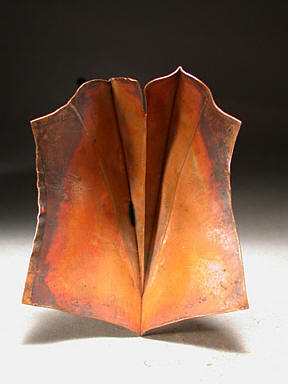Steps on Making a Plunkett Fold
One of the most intriguing, and fastest ways to make fold-forms are in the Rolled fold part of the system. Rolled folds use the special, even pressure of the rolling mill to work the metal. They are either a package folded up and put through the mill like a Heistad Cup or are set up so that one side of the fold has more layers than the other when it is put through the mill. These travel further than the side with less layers when rolled, and, restrained by them, the whole fold curves as a result. This page describes the steps to making a Plunkett fold. The Good fold is derived from a Plunkett fold. These kinds of folds work well when forged as well as in the mill.
2 Minute Read
This page describes the steps to making a Plunkett fold. The Good fold is derived from a Plunkett fold. These kinds of folds work well when forged as well as in the mill.
One of the most intriguing, and fastest ways to make fold-forms are in the Rolled fold part of the system. Rolled folds use the special, even pressure of the rolling mill to work the metal. They are either a package folded up and put through the mill like a Heistad Cup or are set up so that one side of the fold has more layers than the other when it is put through the mill. These travel further than the side with less layers when rolled, and, restrained by them, the whole fold curves as a result.
Steps on Making a Plunkett Fold
Purchase your own copy of “Foldforming (Hardcover)” today. |
You assume all responsibility and risk for the use of the safety resources available on or through this web page. The International Gem Society LLC does not assume any liability for the materials, information and opinions provided on, or available through, this web page. No advice or information provided by this website shall create any warranty. Reliance on such advice, information or the content of this web page is solely at your own risk, including without limitation any safety guidelines, resources or precautions, or any other information related to safety that may be available on or through this web page. The International Gem Society LLC disclaims any liability for injury, death or damages resulting from the use thereof.
Charles Lewton-Brain
Master goldsmith Charles Lewton-Brain trained, studied and worked in Germany, Canada and the United States to learn the skills he uses. Charles Lewton-Brain is one of the original creators of Ganoksin.
The All-In-One Jewelry Making Solution At Your Fingertips
When you join the Ganoksin community, you get the tools you need to take your work to the next level.
Trusted Jewelry Making Information & Techniques
Sign up to receive the latest articles, techniques, and inspirations with our free newsletter.
